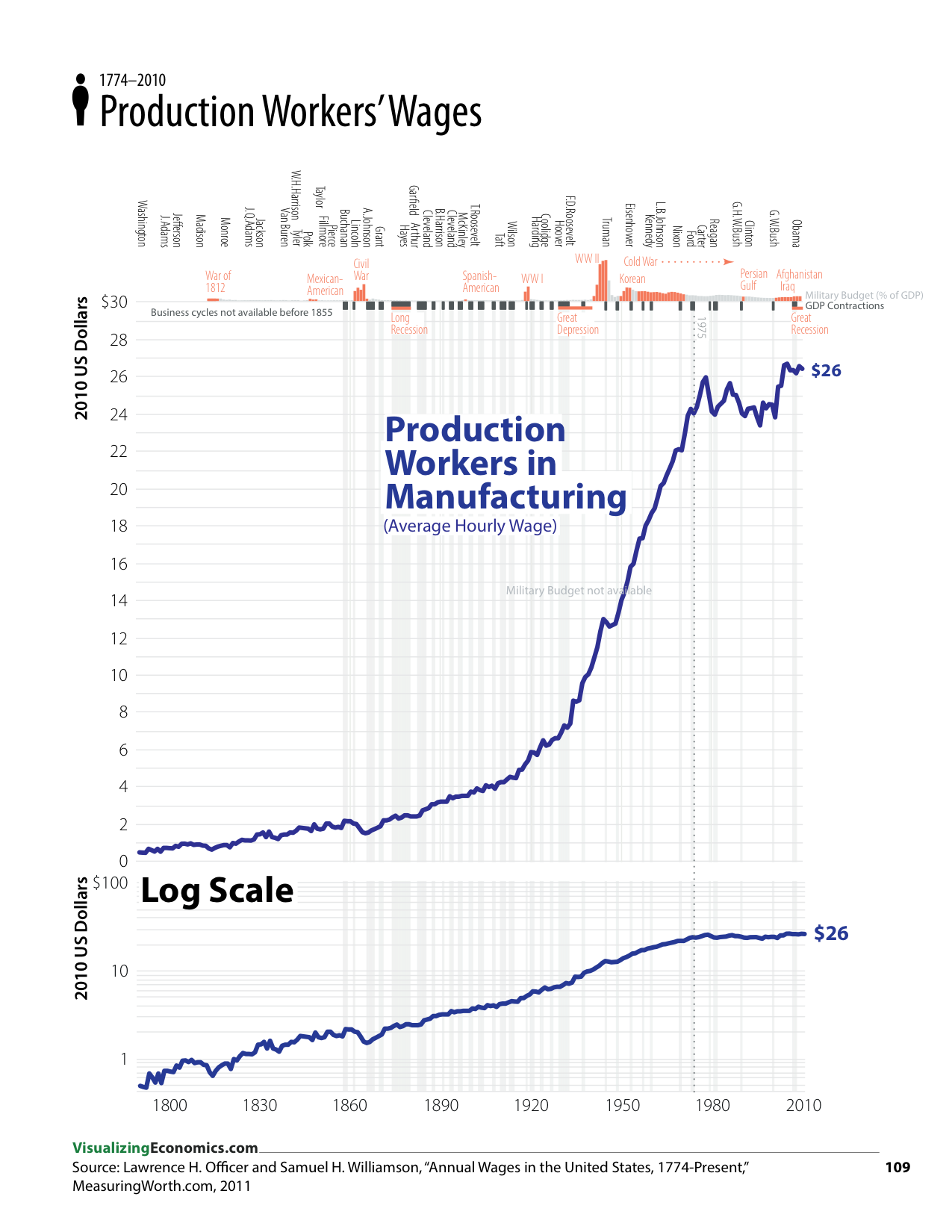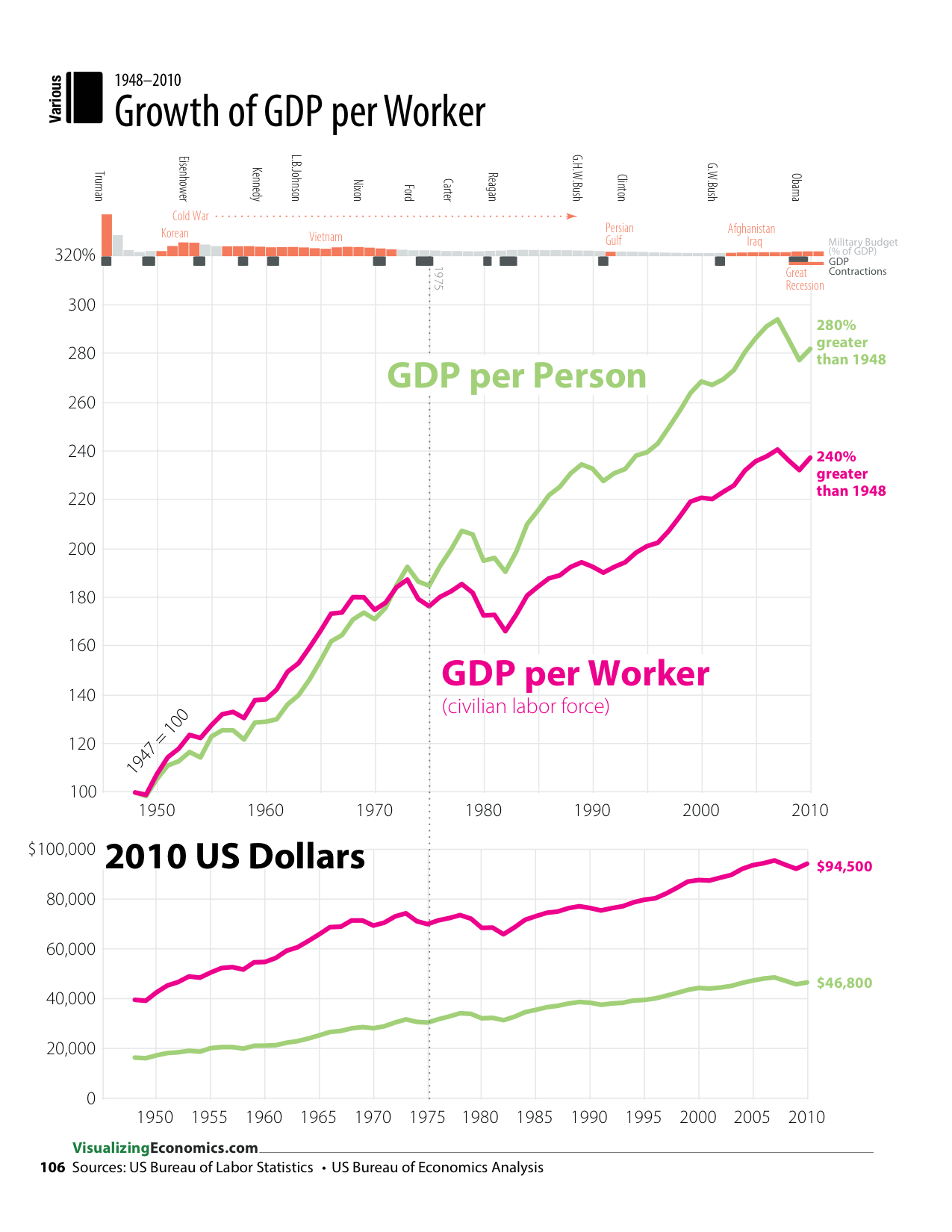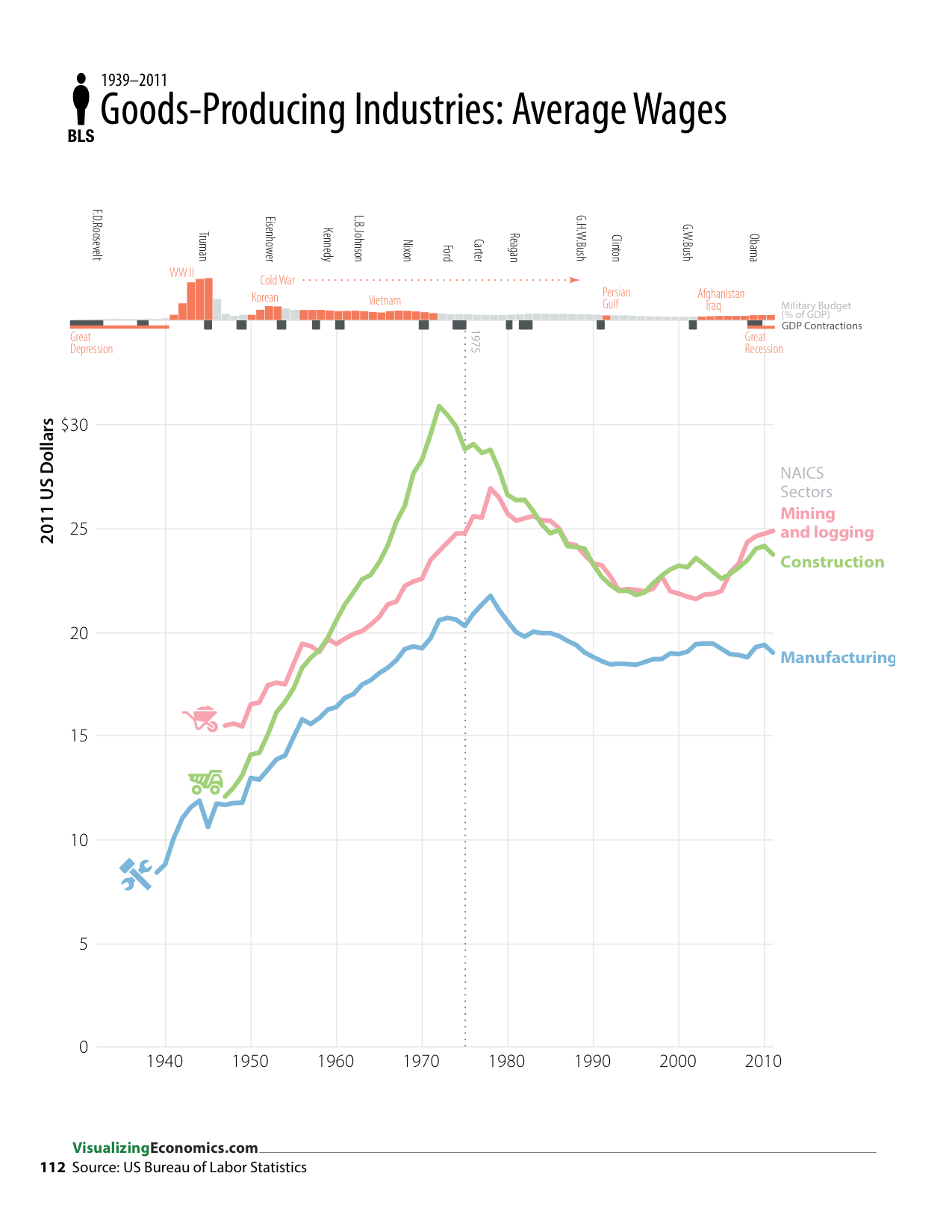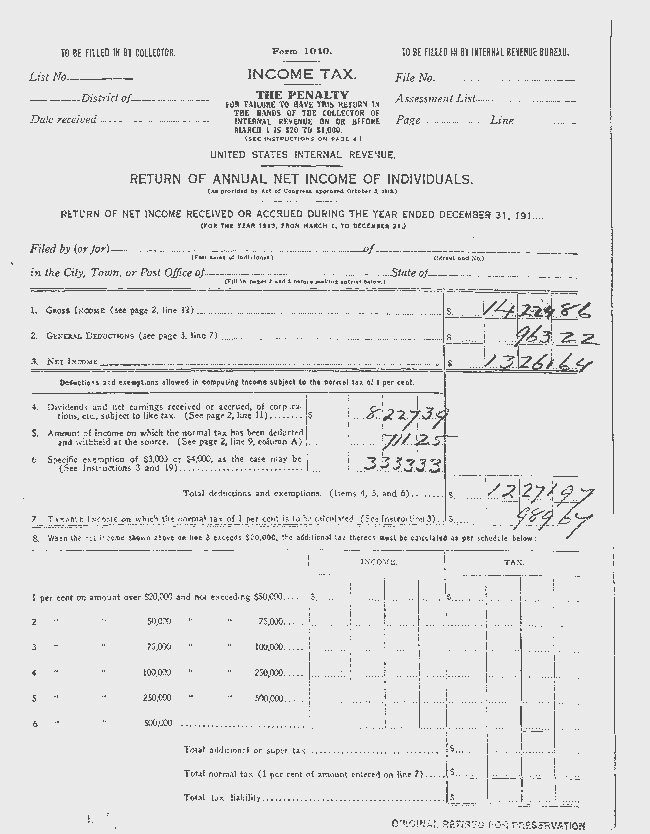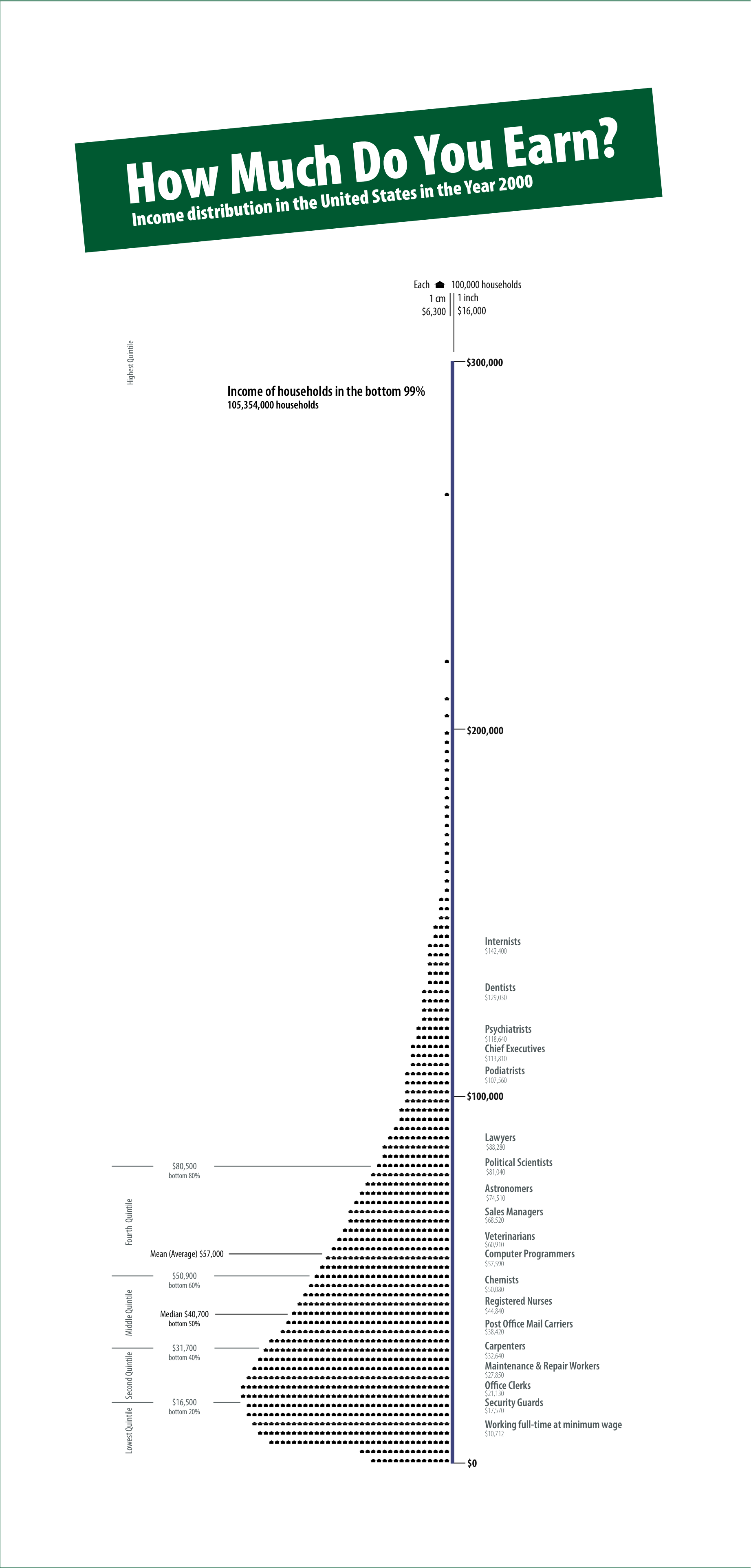First, what do I mean by good job? Well-paid? High level of job satisfaction? Lots of job security?
From heteconomist: Why so many jobs are crappy
Satisfying jobs – let's call them 'good jobs' – will generally be ones where learning occurs at a steady pace more or less indefinitely, probably as part of a defined career path. [...] Once you gain experience in a good job, you will soon become much more efficient in the role than an inexperienced replacement would be.
Summarizing this post, MarginalRevolution comments
The first key point is that if you learn more on the job on a regular basis (i.e., your job is interesting), you become harder to replace from the point of view of your boss. Over time you win more of the bargaining surplus.
So looking at my treemaps of occupations from An Illustrated Guide to Income in the United States, I have a category called "Long-term on-the-job training" defined as:
More than 12 months of on-the-job training or, alternatively, combined work experience and formal classroom instruction, are needed for workers to develop the skills to attain competency. Training is occupation specific rather than job specific; therefore, skills learned can be transferred to another job in the same occupation. This on-the-job training category also includes employer-sponsored training programs.
This sound like some of the "good jobs" people are looking for that don't require a college degree.
Click on images to enlarge.
WIth this data graphic, I wanted to give an overview of all occupations grouped by the education/training required. The size of each rectangle represents the number of jobs.
Occupations like: electricians, carpenters, farmers & ranchers, restaurant cooks, photographers, police & sheriff's patrol offices can be found in "Long-term on-the-job training".
The last three occupations (restaurants cooks, photographers, police & sheriff's patrol offices) increased in number of jobs from 2001-2011.
To learn more about which industries have a high number of "long-term on-the-job training" jobs, first check out pages 128-148 in my book and then goto the BLS's Occupational Handbook to search for more jobs with long-term on-the-job training but no college requirement.
Data for the occupation treemaps was provide by EMSI based on data from Bureau of Labor Statistics (BLS).
.


